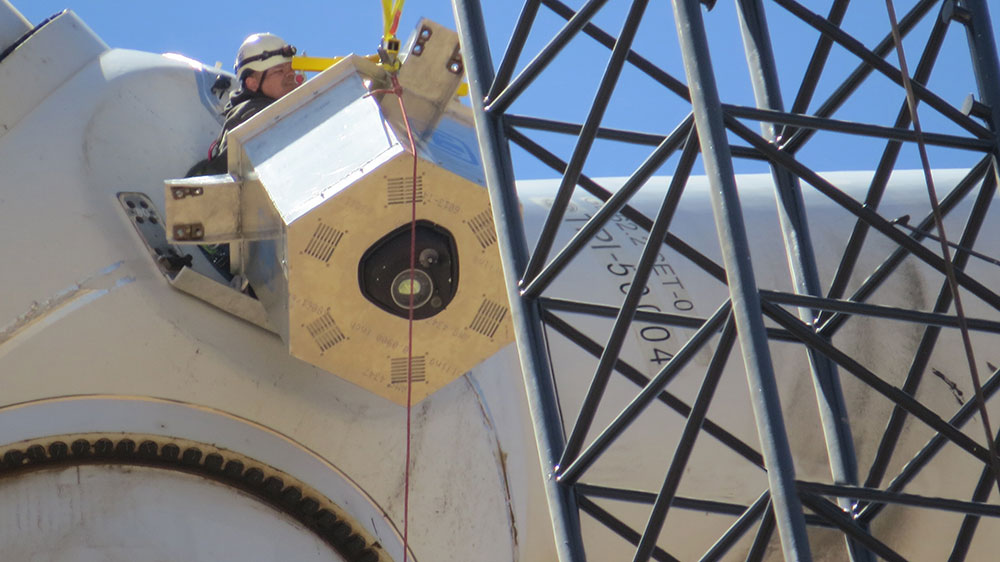
Sandia Wind Energy Technologies researchers successfully installed and deployed the spinner lidar on the hub of a General Electric Co. wind turbine in Lubbock, Texas. The instrument was added as part of a cooperative research agreement between Sandia, the National Renewable Energy Laboratory, and GE for the Rotor Aerodynamics, Aeroelastics and Wake experiment funded by the DOE Wind Energy Technologies Office.
“This project seeks to improve how wind turbine models are validated and improve our understanding of large-rotor physics by applying new data assimilation techniques that enable time-resolved, high-fidelity model comparisons to the experimental data,” said Chris Kelley, a principal investigator for the Rotor Aerodynamics, Aeroelastics and Wake experiment at Sandia. Improving models and validation techniques for the wind industry is another way that Sandia researchers are studying innovative ways to produce clean energy and help meet the United States’ goal of net-zero emissions by 2050.
The new instrument looks upstream from the turbine hub and provides measurement data of the wind speed and turbulent structures approaching the wind turbine across the entire rotor swept area every two seconds. One thousand wind speed data points over the entire rotor disc allows for much higher spatial resolution than meteorological towers can provide.
Researchers at Sandia will use the spinner lidar to implement a data assimilation strategy, whereby measured inflow is input into an aeroelastic simulation.
They seek to improve the predictions of unsteady turbine and blade loads in turbine simulations by better characterizing the turbulent inflow structures. The spinner lidar, which sends pulses of laser light to determine the presence, shape and distance of objects, provides a validation dataset to improve the accuracy and prediction of the DOE ExaWind code suite and simulation tools at GE. Such improvements to design codes lead to more robust and reliable wind turbine blade designs and reduced levelized cost of electricity for wind energy.
Sandia scientists obtained the spinner lidar instrument from the Technical University of Denmark and designed and fabricated the custom mounting frame and data networking hardware. Project partners developed and agreed upon a critical lift plan and multiorganizational work agreement to increase lift safety, reduce lift uncertainties and define roles and responsibilities clearly between partners of the Rotor Aerodynamics, Aeroelastics and Wake experiment.

“The installation of the lidar required considerable planning, since the instrument was too large to install from inside the nacelle or hub,” Chris said. “GE helped us develop a lidar mounting concept, and the Sandia team designed and fabricated a lidar mounting frame with a pivoting hinge. A large crane was part of the installation process and the pivot allowed for the lidar to be disconnected from the crane rigging by personnel within the turbine hub.”
The Rotor Aerodynamics Aeroelastics and Wake Project experiment team is already collecting inflow data from the spinner lidar instrument. The lidar will operate through September 2023. Data will be collected from the lidar instrument for various turbine operational states and wind conditions, so that simulation tools can be validated for all operating conditions.
Read more about the experiment in the Sandia FY 22 Wind Energy Program Accomplishments Report.